Skin fungus and nail plates are the most common dermatological disease, according to the statistical data of the World Health Association. They convey a large number of difficulties to someone, file their household life, violate ordinary biorhythm. Fungal treatment is long and expensive. Therefore, the previous diagnostics are made, the sooner you can start treatment, preventing the development of complications.
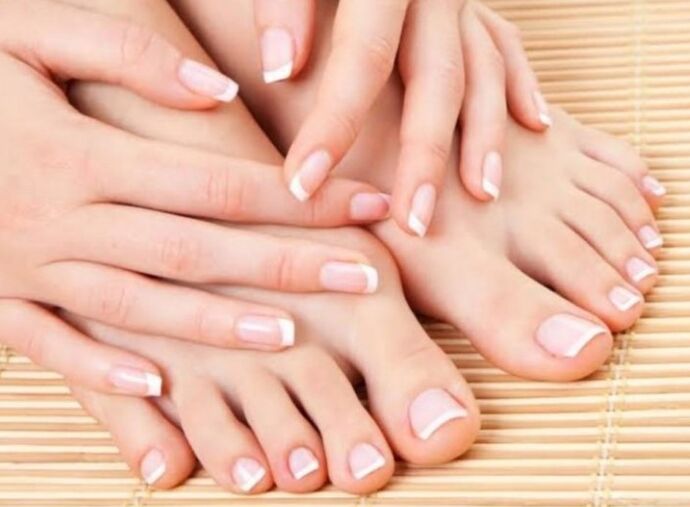
What is the fungus on the feet?
Fungus and nails are contagious diseases that affect the upper layer of the epidermis and toenail plates. Onychomycosis (a medical name for pathology) is caused by skin lesions such as microorganisms as mold, yeast, candida mushrooms, dermatomycetes, dermatophytes. The microorganism data group can survive and reproduce on the human body, gradually affecting healthy cells. Often, fungus is found in men, because of their microflora, more suitable for the development of fungal infections.
In medical classification, there are about 50 types of fungus. About 85% fungal lesions are caused by dermatomycetes. Candida fungus type is the cause of the disease, about 10% - 12% of cases. The small percentage of the remaining falls on the microorganisms of microorganisms, which is actively reproducing by non -compliance with the rules of personal hygiene.
The intensity of the spread and the level of development of fungal disease depends on many factors: climate that promotes bacterial reproduction of this type; the social state of the human home; age criteria; Characteristics of individual body; immunity. Often, people face fungus, after 50 years, because their PH levels are weaker and cannot suppress this type of microorganism.
Causes -Causes of fungal formation in the foot
The penetration of mikotic organisms into the skin leads to the development of fungal infections. Due to the presence of proteolytic enzymes, the fungus easily penetrates the epidermal surface tissue, and the protein structure allows them to actively develop and hold in their place.
The body's immune system can suppress the pathogen environment independently, but sometimes this is not enough. On the surface of the skin, it contains special bacteria that support the acid-base balance. The alkaline environment is not profitable for the development of fungal infections, so miselium, which falls on healthy skin, dies after a while. But there are several factors that allow fungus to familiarize yourself with the skin:
- mechanical damage to the skin (wounds, scratches, burns);
- Aggressive exposure to household chemicals, reducing skin-base acid balance (frequent bathing with shampoo or gel, deodorant feet, prolonged contact with water);
- long wearing synthetic material, causing active sweat (synthetic socks, shoes for chicken feet);
- Hyperhidrosis - an increase in sweating associated with the individual characteristics of the body;
- Features of the anatomy of the foot, such as flat feet or narrow gaps between the fingers (worsening the quality of hygiene in the area), which contributes to poor leg ventilation;
- Excessive nail growth, nails grow on the skin;
- varicose diseases;
- Features of climate in the region (simple or cold climate, where you should always wear closed heating shoes);
- Age related to immune and related hormones;
- the presence of pathology that affects the condition of the immune system (diabetes, HIV infection, obesity, disruption);
- taking antibiotics, cytostatic agents, contraceptives;
- Frequent use of antiseptic agents (gels, napkins, special solutions for skin processing).
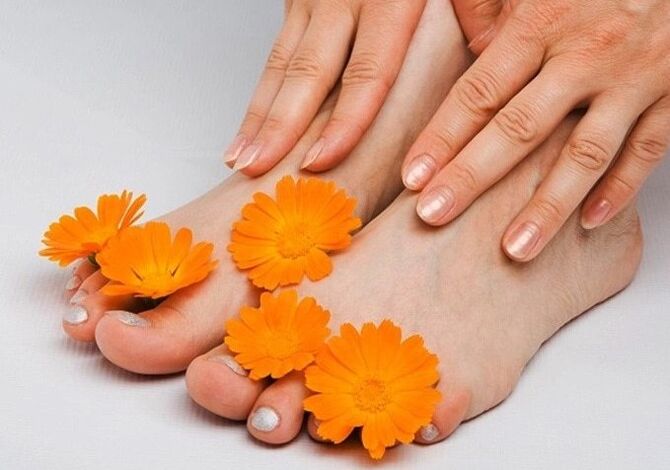
The penetration of fungus into the toenail plate, occurs as follows:
- The fungus penetrates from the nail -free edge (cut). Therefore, the development of the disease begins under the nail itself, gradually transforming the free advantage and spreads deep into healthy areas. This form of fungus is the easiest and easiest to remove.
- Dorsal way (from cuticles). The method of damage to the nail plate is less common. It's just a feature for dermatomicetov. Dorsal defeat involves the rapid destruction of the nail plate as soon as possible.
- By damage to the proximal roller. This is the rarest and worst form of nail fungus. The disease leads to the destruction of the nail phalanx structure itself. If you do not start treatment in time, then you can lose your nails for a long time, as it will not develop anymore. The use of ointments, gels and liquids in this form of fungus is actually ineffective.
In large risk groups, people who visit public places are found: sports clubs, public shower, swimming pools, beaches with water bodies, sauna or baths. Also, people who get shoes and clothes that are already worn or change them with friends or contacts are at risk.
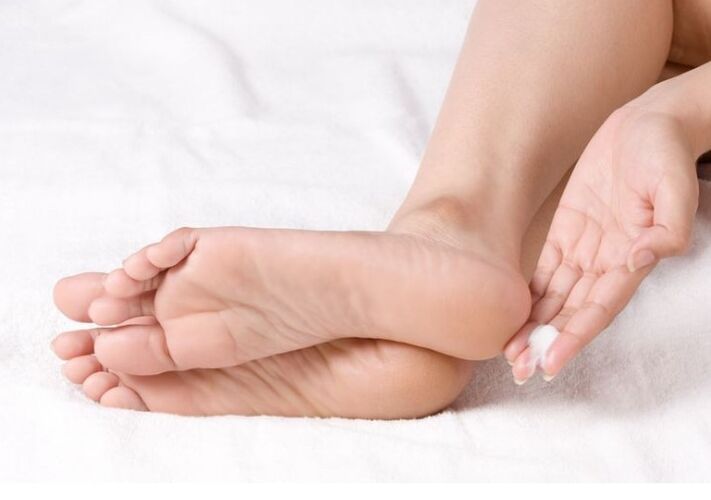
Symptoms of foot fungus and nails in the legs
The symptoms and courses of the disease depend primarily on the type of microorganism that causes the disease. Another factor is age than older people, more symptoms will become, and the process of damage to the skin and nails is significantly accelerated.
Despite this individual disease, about the types of bacteria and the characteristics of the body, there are general symptoms that you can recognize fungal infections:
- With the presence of fungus on the scalp, tissue compaction occurs, especially on the fingers. As a rule, the skin brightens, becomes dry, begins to peel. Peeling is accompanied by unpleasant itching. The nail plate wound publisher is an inflammation of the roller almost absurd. Fungus that affects the nail roller skin is accompanied by an inflammation. When pressed on the skin, one feels sick, there is discomfort when wearing closed shoes.
- If it comes to its own nails, the symptoms appear gradually. First, you can see a small change in the color of the nail, it becomes more muddy and covered with white haze. If the cause of the fungus becomes dermatomycetes, it begins to divide. Further, the color of the nail plate occurs, they become more yellow, after which they begin to dense. After sealing, nail deformation occurs, nail phalanx begins to rotate, nails begin to color gradually.
In the process of developing the disease, one feels a bit of pain and itching, there is a desire to scratch under the nail. In addition, for skin fungus, unpleasant sour smells, which are very prominent in tight and closed space.
Treatment of skin fungus and nails in the feet
Treatment of skin and nail plates is different. Therefore, the presence of both types of fungus involves complex therapy. For the treatment of skin fungus, ointment, gels or creams are most commonly used:
- Sulfur ointment. It destroys the fungal protein membrane, preventing their reproduction. Perfect ointment relieves itching and removes inflammation.
- Zinc ointment. It is often used in the skin fungal treatment complex, accelerating the wound healing process.
- Salicyl ointment. This tool is effective for all types of skin fungus. The course of treatment is only 2 weeks.
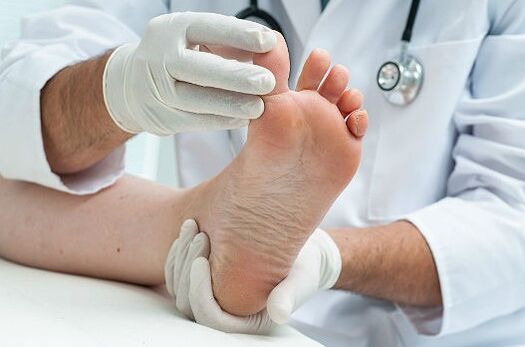
For the treatment of worse forms of fungal infection caused by mycetic mold, use medicine to take in. The essence of this treatment is based on two principles:
- Destroy fungus in the active development phase.
- Stop growth of pathogenic microflora.
Before starting the treatment, you should go through all the necessary medical studies and determine the type of microorganism that causes fungus. Only based on this data, the doctor will be able to prescribe effective treatment.
Prevention and treatment of fungus in the foot with folk medicine
As mentioned, the formation of fungus on the scalp and toenails is associated with the fall of the natural level of alkaline pH5. 5. It is an alkaline balance that prevents the development of pathogenic microflora. Therefore, fungal treatment with folk medicine, aimed at improving skin acid balance. Effective home methods in home fungus struggle can be associated with the following:
- Alkali bath. In three liters of warm water, dissolve one tablespoon of regular stone salt (preferably iodized) and bastard soda. Dip in foot solution, previously cleans the skin, and lasts for 15 minutes.
- Bath based on vinegar and iodine. Add to the basin with warm water, half a glass of table vinegar and 10 drops of Yodin. Reduce your feet for 15 minutes. In the absence of time, you can only moisturize two cotton swabs in vinegar and wipe each foot with your nails. If the skin has a fungal infection, they should be lubricated with iodine so that the fungus does not spread.
- Lemon juice. Wipe one lemon juice and add a pinch of salt to it. Moisturize one cotton in the juice and treat all affected areas of the skin as well as nails. Repeat the procedure three times a day.
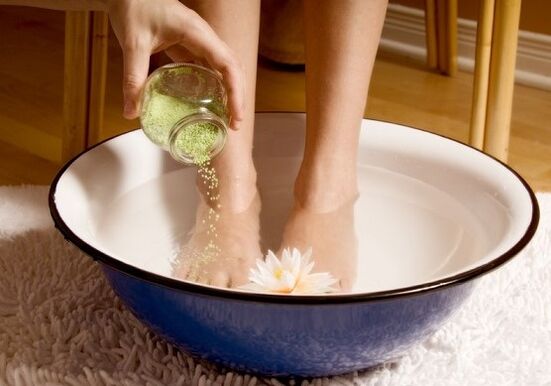
Such a procedure will serve as an excellent fungal prevention for people living an active lifestyle, visiting sports complexes, swimming pools. For prevention purposes, one weekly procedure is sufficient. For the treatment of simple forms of fungal infection, therapy is carried out daily, for one week. While such methods do not help eliminate fungus, they will be able to slow down the development of pathogenic microorganisms, for your visit to a dermatologist.
























